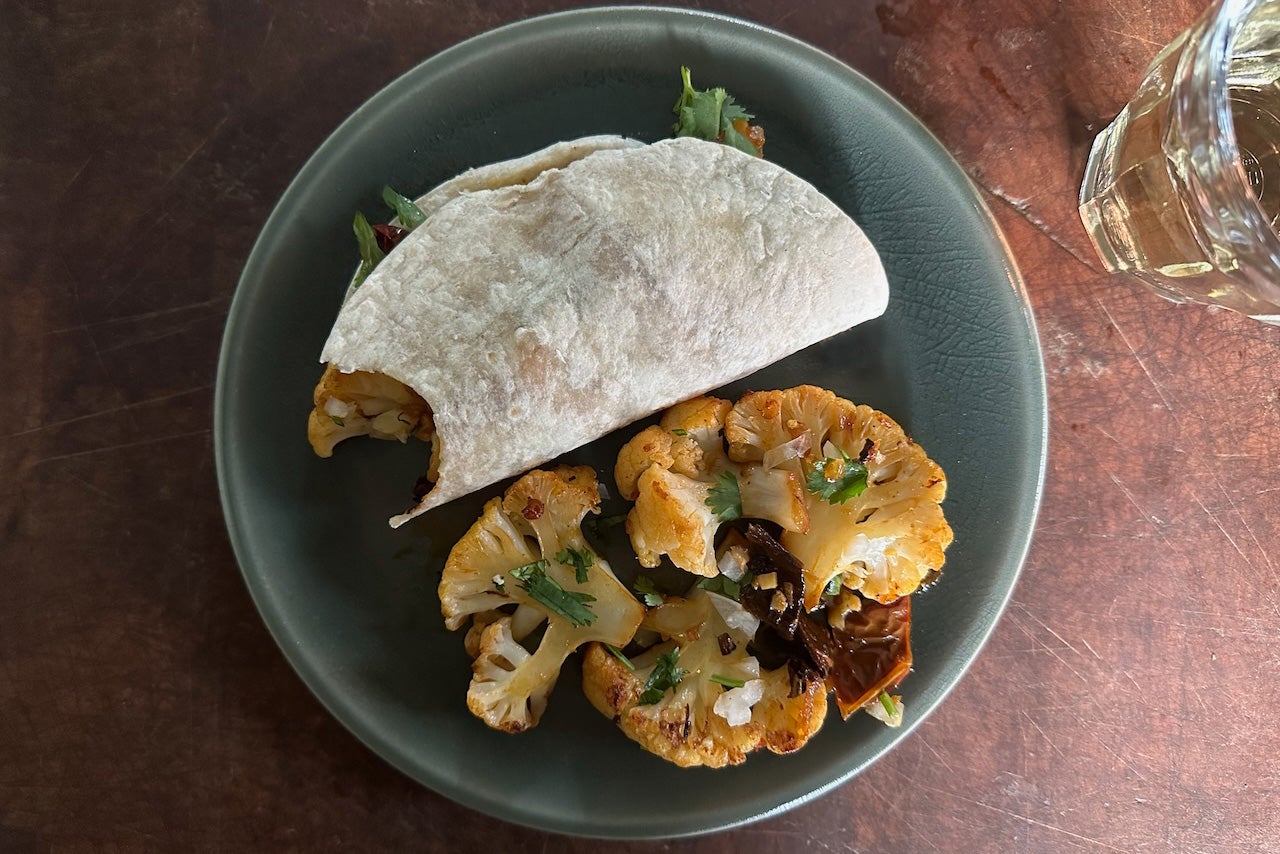This story is part of On Repeat, a series in which we ask top chefs, cookbook authors, and other famous foodies about the dishes they just can’t quit.
When we caught up with Barbara Sibley, chef-owner of Mexican mainstay La Palapa in New York City’s East Village, for this week’s edition of On Repeat, she was coming off the last of four Cinco de Mayo–related catering gigs. In fact, the Mexico City–born restaurateur had just whipped up one of her favorite plant-based recipes for one such party.
The dish in question is a riff on the traditional shrimp a la diabla, a quick-cooking concoction of seafood in a fiery sauce made from dried chiles. To make it plant-based, Sibley bathes cauliflower rather than camarones in that spicy salsa. “I blanch the cauliflower just a little bit and slice the crowns into thin slices, and they keep some crunch,” she says. “Then they’re sautéed with some combination of chiles, and finished with a little white wine.”
Why I love it
“Cauliflower is almost like a blank slate. It adds crunch and a little sweetness and tang, but it really allows the chiles to shine. It’s a dish where you don’t feel you’re compromising in any way. It’s absolutely delicious. I serve it either as tacos or with a basket of tortillas on the side. It’s really delicious if you have a side of sweet plantains—it’s a way of building a whole meal.”
What I’ve changed
“I’ve made it with setas (mushrooms)—portobellos sliced into strips, or oyster mushrooms—which is wonderful. (I oven-roast them to dry them out a little bit so they don’t have as much moisture to release into the sauce.) It’s a very natural progression to go from the shrimp to the mushrooms to the cauliflower. Cauliflower works extremely well—and so do Brussels sprouts.
“You can top it with cilantro and sweet onion, and maybe a spicy tomatillo salsa. Plus, depending on how you combine the chiles and what proportion you use of each, you have different kinds of spice coming through and you can play with the spiciness of the dish—you can make it as spicy or not as you like.”
What else I’m into right now
Mushroom stems. I was recently introduced to a mushroom product called Fable. When producers dry shiitake mushrooms, they only use the caps. So Fable is upcycling the stems into the most delicious meat substitute. I like to make them in a red sauce, like a barbacoa, which is braised meat. Whenever I’ve used it in catering it’s such a hit. It’s not widely available yet (I get it through my restaurant purveyor). I can’t wait for it to be available to more people.
Two versions of “local.” My definition of local is a little bit different. Many of the ingredients people associate with Mexican cuisine—chiles, tomatoes, onions, cilantro—are grown in the very rich parts of the U.S. and Mexico. So I try to use authentic ingredients that support the farmers in the southwest of Mexico: things like hibiscus flowers, guavas, cactus. It’s my strange, faraway version of local. In my nearby version of local, I buy a lot of greens from the farmers market. In Mexico there’s a whole cuisine that’s based on wild greens like amaranth and lamb’s lettuce and purslane. So I buy wild greens at the farmers market and use them in tacos and quesadillas.
Squash blossoms. In Mexico you can buy squash blossoms in great quantities—when they have them, you get a lot of them. Here, they’re more like a delicacy—we tend to follow the Italian tradition where you stuff individual blossoms with ricotta or something. In Mexican cuisine they can be the predominant part of a dish. It’s common that you sauté them and use them in quesadillas as a filling—squash blossom quesadillas are the most delicious thing ever, and squash blossom soup is the best. Here in the Northeast, the season starts in June: We’re almost there.

